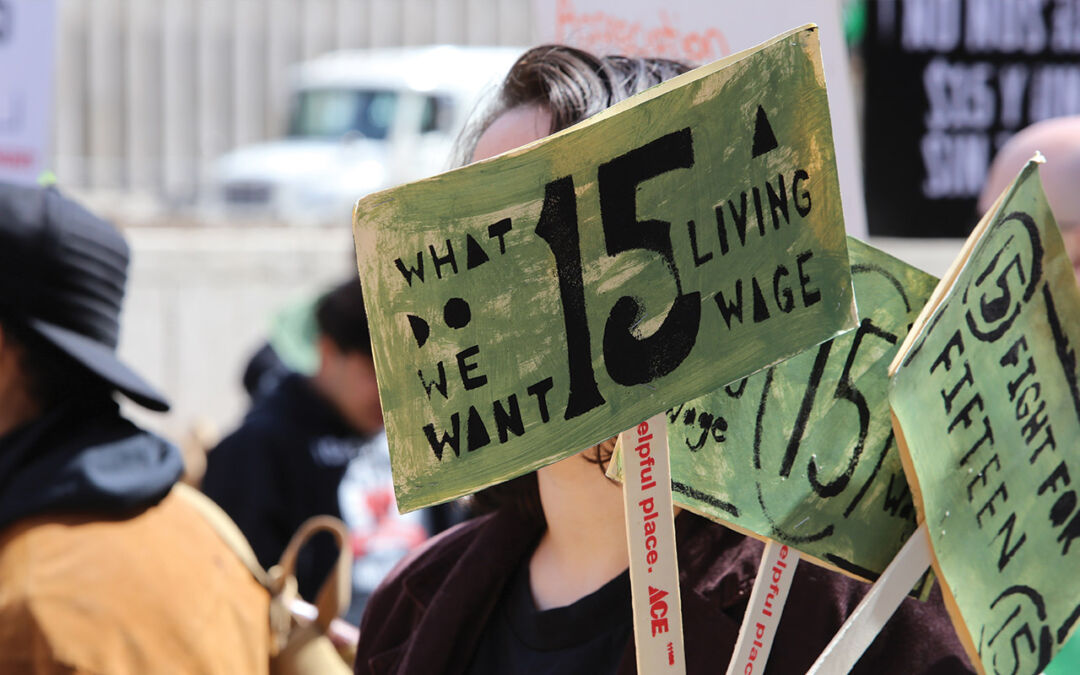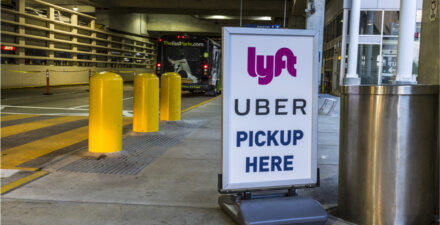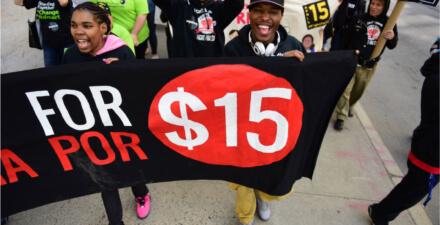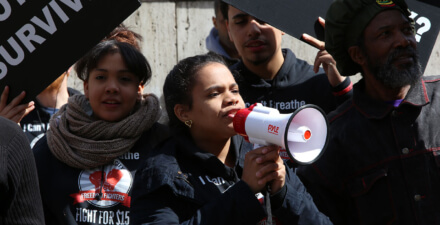What happened to the federal minimum wage debate?

In 1912, textile workers in Lawrence, Massachusetts—mostly immigrant women from countries including Cuba, Ireland, Italy, Syria, and elsewhere—went on strike in response to wage cuts. This strike is sometimes referred to as the Bread and Roses strike, a reference to the slogan and demand inscribed on picket signs, “We Want Bread and Roses Too.” These striking workers produced enough pressure to lead to the passage of the first minimum wage law in the United States, which established wage boards to set wage standards by industry. After 16 states followed suit in response to worker organizing and legal battles over the ensuing two decades, the Fair Labor Standards Act of 1938 mandated a federal minimum wage.
Yet as City University of New York sociologist Stephanie Luce points out, the nationwide minimum wage law did not contain a formula for actually setting a national minimum wage and lacked a mechanism for adjusting it in the future. Any increase to the minimum wage had to be enacted by Congress. Since then, the federal minimum wage has been raised 22 times, most recently in 2009 to reach its current level of $7.25 per hour.
Twelve years is the longest time by far that the federal minimum wage has remained unchanged. What’s more, congressional discourse on increasing it has stalled due to pressure from the business community regarding wage costs borne by companies, including small businesses. The consequences are most telling for women of color, a group that already registers the lowest levels of both earnings and wealth by race, ethnicity, and gender in the United States. Furthermore, the purchasing power of the federal minimum wage has decreased by nearly 20 percent since 2009 and approximately 40 percent since its peak value in 1968, which would be the equivalent of $12.27 in today’s dollars.
This lack of an increase in the federal minimum wage hurts all workers, but it particularly affects Black women and Latinas. Due to occupational segregation, Black women are more likely to be sorted into lower-paying jobs, meaning that Black women are overrepresented among minimum wage workers. A recent analysis by the U.S. Bureau of Labor Statistics finds that even though Black women make up 8 percent of all hourly workers, they represent 14.1 percent of workers with wages at the federal minimum and 12.1 percent of those below it. About 46 percent of Latinas and 39 percent of Black women still earn less than $15 an hour. And one recent estimate finds that almost 1 in 4 people who would benefit from an increased federal minimum wage to $15 per hour is a Black woman or a Latina.
Minimum wage inequities are not new, but they are part of the larger legacy of racial disparities and exclusions in U.S. history that continue to reverberate today. Early manifestations of minimum wage laws—including at both the state and federal levels—excluded Black women. These laws encapsulated, reaffirmed, and produced White supremacist notions of domesticity and labor, in which Black women were conceptualized as neither mothers nor breadwinners.
When the Federal Labor Standards Act was eventually amended in 1967 to cover a larger share of the U.S workforce, the positive effect of the minimum wage expansion was almost twice as large for Black workers than for White workers, according to economists Ellora Derenoncourt at Princeton University and Claire Montialoux at the University of California, Berkeley. They estimate that this expansion of the minimum wage to include more industries can explain more than 20 percent of the decline in the racial earnings gap during the late 1960s and early 1970s.
These reforms did not have any significant adverse effects on overall employment levels. Indeed, the broader sweep of the federal minimum wage had the dual effect of reducing the racial earnings gap—the difference in earnings by race for employed individuals—and the racial income gap—the difference in income between Black and White individuals, whether working or not. This can be explained, in part, because the newly covered sectors—agriculture, nursing homes, laundries, hotels, restaurants, schools, and hospitals—employed about one-fifth of the U.S. labor force and almost a third of all Black workers.
Minimum wage laws are a crucial tool for addressing racial equity. There is strong evidence that raising and expanding the federal minimum wage today would help alleviate poverty for Black and Latinx workers, address pay gaps, and bolster the economic stability of those Black and Latinx workers and their families particularly affected by the coronavirus recession of 2020 and the continuing economic volatility caused by the ongoing pandemic. This is all the more reason to continue expanding minimum wage laws broadly, as well as the enforcement of these laws.
Recent research by economist Anna Stansbury at Harvard University suggests that the current system of penalties companies face for violating minimum wage laws offers very little financial incentive for businesses to comply. In practice, the financial penalties that firms face are diminutive, compared to the profits they can earn through noncompliance. Stansbury also finds that due to constrained resources for federal investigation and inspection, the probability of an inspection by the U.S. Department of Labor in any given year may be as low as 2 percent—even in sectors with a high risk of noncompliance.
There are less overt ways for businesses to bypass minimum wage laws as well. Companies can avoid paying the minimum wage by misclassifying workers as “independent contractors” rather than employees. Independent contractors traditionally are those who run their own professional operations, contract with many different businesses, and negotiate mutually agreeable contract terms, but the designation more recently is being used by so-called gig economy companies when they hire low-wage workers. The result of this misclassification is that these workers—who are disproportionately Black—are not entitled to many health and safety protections, are unable to join a union, are not eligible for benefits such as health insurance or the right to earn sick leave or other forms of leave, and are not covered by minimum wage or overtime laws.
The need for movement on raising the federal minimum wage has been long recognized by policymakers and activists alike. As outlined by Equitable Growth’s Director of Labor Market Policy and interim chief economist Kate Bahn, the “Fight for Fifteen” movement starting in 2012 and “OUR Walmart” movement starting in 2010 exemplify worker-led labor organizing efforts to demand increased wages. The efforts of Fight for Fifteen directly affected New York state’s minimum wage increase to $15 per hour several years ago, and these efforts provide a path for movements to agitate for a higher federal minimum wage.
OUR Walmart led walkouts and Black Friday protests in the years leading up to Walmart Inc.’s decision to increase its workers’ hourly wages. New York City recently enacted new pay standard laws with the intent of providing app-based ride-hail drivers a minimum level of pay per trip equivalent to $15 per hour after expenses by taking into account time spent on the road, distance traveled, and the extent to which drivers are utilized and spend time with passengers. And at the federal level, an executive order increasing the minimum wage to $15 an hour for federal contractors was enacted in the beginning of the Biden administration’s tenure in 2020.
Expanding minimum wage laws are essential for the growth of our economy, for racial, ethnic, and gender equity, and for the dignity of workers. The demand made by workers more than a century ago reverberates today, and the words on their banner still ring true: “We Want Bread and Roses Too.”







